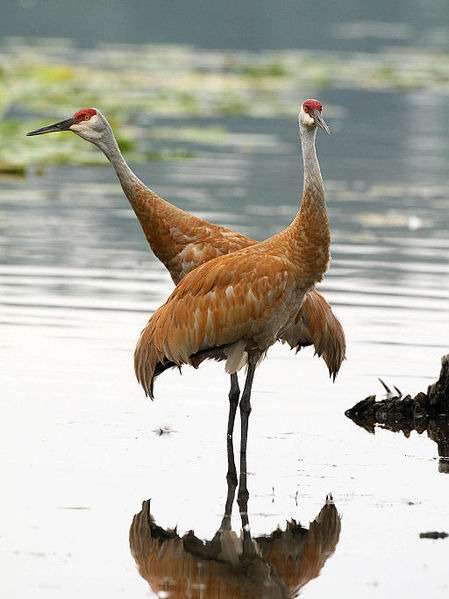The Siberian crane, also known as the Siberian white crane or the snow crane, is a bird of the family Gruidae, the cranes. They are distinctive among the cranes: adults are nearly all snowy white, except for their black primary feathers that are visible in flight, and with two breeding populations in the Arctic tundra of western and eastern Russia. The eastern populations migrate during winter to China, while the western population winters in Iran and (formerly) in Bharatpur, India.
Siberian crane
Mughal era painting of a Siberian crane by Ustad Mansur (c. 1625).
Juveniles at Oka Nature Reserve nursery
A Siberian Crane Family at Poyang Lake, Jiangxi, China
Cranes are a type of large bird with long legs and necks in the biological family Gruidae of the order Gruiformes. The family has 15 species placed in four genera which are Antigone, Balearica, Leucogeranus, and Grus. They are large birds with long necks and legs, a tapering form, and long secondary feathers on the wing that project over the tail. Most species have muted gray or white plumages, marked with black, and red bare patches on the face, but the crowned cranes of the genus Balearica have vibrantly-coloured wings and golden "crowns" of feathers. Cranes fly with their necks extended outwards instead of bent into an S-shape and their long legs outstretched.
Crane (bird)
The bare area of skin on the face of a sandhill crane can change colour or even expand in area when the bird is excited.
The long coiled trachea that produces the trumpeting calls of cranes (sarus crane, Antigone antigone)
Grey-crowned crane (Balearica regulorum) in captivity at Martin Mere, UK








